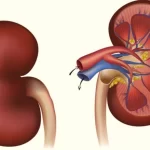What is Pelvic Inflammatory Disease?
Pelvic Inflammatory Disease (PID) The name given to the infection of the reproductive organs located in the lower part of the woman’s abdomen. This is also commonly referred to as a “pelvic infection.” This can happen if you have had a venereal disease such as gonorrhea or chlamydia and it is not treated. This disease can occur even if childbirth or spontaneous abortion or abortion was done in unhygienic conditions in the near past period.
Pelvic Inflammatory Disease (PID)-causing germs to travel through the vagina and cervix to reach the uterus, fallopian tubes, and ovaries. If this infection is not treated in time, it can lead to long-lasting pain, serious illness, or death. Infection in the fallopian tubes can cause scarring to form, putting you at risk of infertility or pregnancy outside the uterus (“ectopic pregnancy”).
What causes pelvic inflammatory disease?
The most common types of bacteria that can cause this type of infection are chlamydia and gonorrhea. This type of bacteria is usually transferred through an infected person.
Other reasons due to Pelvic Inflammatory Disease (PID) can occur-
- Multiple sexual partners
- Having unprotected sex
- It spreads more rapidly in girls under the age of 25 because the mouth of their uterus is not ready to deal with sexually transmitted diseases by this age.
- Being in a sexual relationship with someone who has multiple sexual partners.
Symptoms of pelvic inflammatory disease (PID)
You may have one or more of these symptoms
- Pain in the lower abdomen or waist
- Feeling extremely sick or weak
- Yellow or green discharge with foul odor from the vagina.
- Pain or bleeding during intercourse
- Menstrual irregularities
- High fever with chills or in some cases fever without chills
- pain while urinating
- Abnormal uterine bleeding without a period cycle
- Intestinal upset
- Tiredness
When should you seek a doctor’s help?
The pelvic inflammatory disease (PID) sometimes does not show any symptoms or its symptoms are very mild. However, if a woman is experiencing any of the below-mentioned symptoms, it means the matter is quite serious and the person concerned should consult a doctor without delay. These symptoms are-
- To pass away
- Vomit
- Severe abdominal pain
- High fever
If any of the above symptoms are happening then you should immediately consult a doctor. This infection may have spread to your blood or other parts of the body. In some cases, they can even be fatal. Therefore, it is important that before the problem escalates, the doctor should be contacted and some necessary tests are done and the right treatment is taken.
Pelvic inflammatory disease (PID) Treatment
Start taking the medicines mentioned below immediately. If you do not feel better after two days and two nights (48 hours) of treatment, or if you are still very ill and have a high fever or vomiting, or if you have recently had labor or miscarriage, seek medical attention immediately to a hospital or health facility. Go to Center You need to be given more powerful drugs intravenously.
Medicines for pelvic inflammatory disease (PID)
This infection is often caused by a mixture of different germs. So you have to take three medicines together
Medicine box 1
- Norfloxacin – 800 mg – Orally, once a day (pregnant, lactating, And women below 16 years of age should take it)
- Doxycycline – 100 mg – Orally, twice a day. (Pregnant and lactating women should take it for 10 days)
- Metronidazole – 400 mg – orally, 3 times a day for seven days.
These medicines should be taken only under the supervision of a skilled health worker.
Other medicines for pelvic inflammatory disease
Medicine box 2
You can use any of the following medicines in place of Pelvic Inflammatory Disease. (PID)
- Ceftriaxone – 250 mg – once a day only – by muscle injection
- Cefixime – 400 mg – By mouth, only once a day.
- Cotrimoxazole – 480 mg Orally, 2 tablets together (80 mg trimethoprim and 400 mg sulfamethoxazole) twice daily – for seven days.
- Ciprofloxacin – 500 mg – By mouth, 2 times a day for -5 to 7 days (do not use if pregnant, lactating, or under 16 years of age).
- Kanamycin – 2 g – By injection into a muscle, once a day (Do not use in pregnant, lactating women and women who are mobile).
You can use any of the following medicines in place of doxycycline
- Tetracycline – 500 mg – By mouth, four times a day for ten days (do not use by pregnant and lactating women).
- Erythromycin – 500 mg – By mouth, four times a day – for two days.
- Amoxicillin – 500 mg – by mouth, 3 times a day – for ten days
All these medicines should be taken only under the supervision of a trained health worker.






